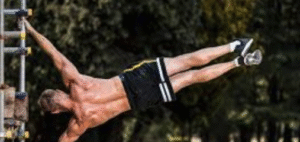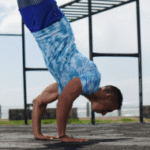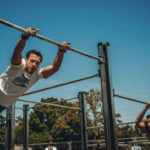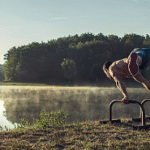Reduce DOMS & Inflammation: The Power of Contrast Therapy (Houston Focus)
let’s break down in detail how contrast therapy can help **”Reduce DOMS & Inflammation,”** focusing on its **power** as a recovery tool, particularly relevant for active individuals in **Houston** and across the USA.
**Introduction: The Aftermath of Exertion & the Power of Contrast**
Anyone who pushes their body through intense workouts, competitive sports, or even just a new fitness routine – common activities for many in active Houston – knows the familiar aftermath: Delayed Onset Muscle Soreness (DOMS) and exercise-induced inflammation. That muscle ache that peaks a day or two later can hinder performance and motivation. **Contrast Water Therapy (CWT)**, the simple yet potent technique of alternating hot and cold water exposure, has become a go-to strategy across the USA for athletes and fitness enthusiasts seeking to effectively combat these issues and speed up recovery.
**Understanding the Targets: DOMS and Inflammation**
* **DOMS (Delayed Onset Muscle Soreness):** This isn’t the immediate burn during exercise, but the soreness, stiffness, and tenderness that develops 12-72 hours *after* unaccustomed or strenuous activity. It’s primarily caused by microscopic damage to muscle fibers and the subsequent inflammatory repair process.
* **Exercise-Induced Inflammation:** Intense physical activity naturally causes a temporary inflammatory response as the body works to repair the micro-damage in muscles and other tissues. While necessary for adaptation, excessive or prolonged inflammation can increase soreness, impede function, and delay recovery.
**Contrast Therapy Explained (The Recovery Tool)**
CWT involves systematically switching between hot and cold stimuli. Common methods include:
* **Contrast Baths/Plunges:** Alternating immersion in hot tubs/pools (typically ~100-104°F / 38-40°C) and cold tubs/pools (typically ~50-59°F / 10-15°C).
* **Contrast Showers:** Alternating between hot and cold water in a regular shower (less immersive but still effective and highly accessible).
**The Power of CWT for Reducing DOMS:**
Contrast therapy helps tackle DOMS through several mechanisms:
- **Pain Perception Modulation:** The most noticeable effect.
* **Cold Numbing:** The cold phase directly numbs nerve endings, providing immediate, temporary pain relief.
* **Gate Control Theory:** The rapid switching between hot and cold sensations might “confuse” or override pain signals traveling to the brain, effectively reducing the *perception* of soreness.
- **Subjective Recovery Enhancement:** Many users report *feeling* significantly less sore and stiff much sooner after using CWT compared to just resting. This psychological boost and feeling of proactive recovery can be very powerful for motivation and adherence to training.
- **Circulation Effects (Theoretical Link):** While the old theory of “flushing lactic acid” isn’t the primary reason CWT helps DOMS (lactate clears relatively quickly anyway), the proposed “vascular pump” effect (alternating dilation and constriction) *might* improve overall circulation. This could potentially aid in delivering nutrients needed for repair and clearing other metabolic byproducts associated with muscle fatigue and the repair process, indirectly influencing soreness resolution.
**The Power of CWT for Reducing Inflammation:**
CWT addresses exercise-induced inflammation primarily through the effects of cold:
- **Vasoconstriction (Cold Phase = Key):** Immediately following exercise, immersing muscles in cold water causes blood vessels to constrict. This is thought to **limit the initial leakage of fluid and inflammatory cells** into the stressed muscle tissue. By controlling this early inflammatory rush and potential swelling (edema), CWT may reduce secondary damage and the overall severity of the inflammatory response.
- **Alternating Flow (“Flushing” Theory):** The cyclical nature of CWT, switching between constricted (cold) and dilated (hot) blood vessels, is theorized by some to create a “pumping” action that might help **mechanically move excess fluid and inflammatory byproducts** away from the affected tissues more efficiently than static cold or heat alone. The evidence for significant changes in *systemic* inflammatory markers is complex, but the local effect on swelling and perceived inflammation is a common rationale for its use.
**Why This Matters for Active People in Houston:**
* **Combating Workout Aftermath:** Houston’s vibrant fitness scene, numerous sports leagues (youth to adult), and physically demanding jobs mean many residents regularly experience DOMS and inflammation. CWT offers a practical tool to manage this.
* **Mitigating Climate Stress:** Training or playing hard in Houston’s characteristic heat and humidity puts extra stress on the body, potentially intensifying muscle fatigue and the subsequent inflammatory response. Effective recovery methods like CWT become even more valuable for helping the body cope with this combined physical and environmental load.
* **Accessibility:** Fortunately, contrast therapy options are accessible in Houston. Dedicated sports recovery centers, many high-end gyms, and some wellness spas offer hot/cold plunge facilities. Plus, **contrast showers** can be done easily and affordably at home by anyone.
**How to Use CWT Effectively for DOMS/Inflammation:**
* **Timing:** Generally most effective when used **soon after the exercise session** (within a few hours) that is expected to cause soreness.
* **Typical Protocol:** Cycles often involve **1-3 minutes in cold** water alternating with **1-4 minutes in hot** water, repeated for a total of **15-20 minutes**, typically **ending with the cold phase** to maximize the anti-inflammatory benefit.
* **Consistency:** Using CWT regularly after particularly strenuous sessions may yield better results in managing chronic soreness patterns.
**Important Safety Considerations:**
* **DOMS vs. Acute Injury:** CWT is primarily intended for managing *exercise-induced soreness and inflammation*. It is generally **NOT recommended for the immediate treatment (first 24-72 hours) of acute injuries** like ligament sprains, muscle tears, or fractures where significant swelling is present. For these, the RICE protocol (Rest, Ice, Compression, Elevation) is usually the standard first aid, unless advised otherwise by a healthcare professional. Using heat too early on an acute injury can worsen inflammation.
* **Hydration:** Always hydrate well *after* exercise, especially in Houston’s climate, *before* starting CWT, particularly if using a hot tub or sauna.
* **Listen to Your Body:** Avoid water temperatures that are painfully hot or cold. Exit immediately if you feel dizzy, faint, excessively numb, or experience uncontrolled shivering.
* **Medical Consultation:** Individuals with cardiovascular conditions (heart problems, high/low blood pressure), circulatory issues (like Raynaud’s), diabetes (especially with neuropathy), or pregnancy should consult their doctor before using contrast therapy.
**Conclusion:**
Contrast Water Therapy stands out as a powerful and widely used tool across the USA, including in Houston, specifically for its ability to **reduce Delayed Onset Muscle Soreness (DOMS) and manage exercise-induced inflammation.** Its effectiveness likely stems from a combination of factors: modulating pain perception through temperature changes, limiting initial swelling via cold-induced vasoconstriction, and potentially enhancing circulation to aid the body’s natural repair processes. For athletes and active individuals in Houston looking for faster recovery and relief from the aftermath of strenuous activity, incorporating CWT safely into their routine can be a highly beneficial strategy to feel better and get back to training or daily life more comfortably.

Reduce DOMS & Inflammation: The Power of Contrast Therapy (Houston Focus)
Route
Calisthenics Gym Houston Functional Bodyweight Training
Secondary phone: (346) 483-3195
Email: info@calisthenicsclubhouston.com
URL: https://calisthenicsclubhouston.com/
Monday 6:00 AM - 7:00 PM Tuesday 6:00 AM - 7:00 PM Wednesday 6:00 AM - 7:00 PM Thursday 6:00 AM - 7:00 PM Friday 12:00 PM - 6:30 PM Saturday 9:45 AM - 12:00 PM Sunday 3:00 PM - 5:00 PM





